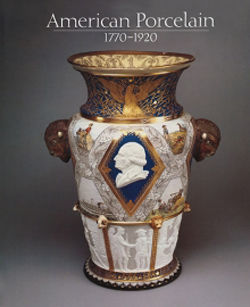The Greek Slave
Manufactured by Minton and Company American
After Hiram Powers American
Beginning in the late 1840s, versions of Hiram Powers’s marble "Greek Slave" were publicly exhibited in both London and the United States. To many, the statue of a young Greek woman in a Turkish slave market symbolized the highest form of artistic achievement and exemplified “good” or “correct” taste. The popular appeal of the sculpture inspired an unprecedented commercial response in the form of affordable reductions in Parian porcelain, plaster, alabaster, and bronze. London-based Minton and Company issued its first Parian porcelain "Greek Slave" in 1848. It was one of several British firms, along with W. T. Copeland, that produced "Greek Slave" statuettes in varying heights for domestic ornament, the recently developed material of Parian porcelain hailed for its resemblance to white marble. The Metropolitan Museum’s example, dated August 1849, no longer has the chain links that were suspended between the figure’s bound wrists.
Due to rights restrictions, this image cannot be enlarged, viewed at full screen, or downloaded.
This artwork is meant to be viewed from right to left. Scroll left to view more.







